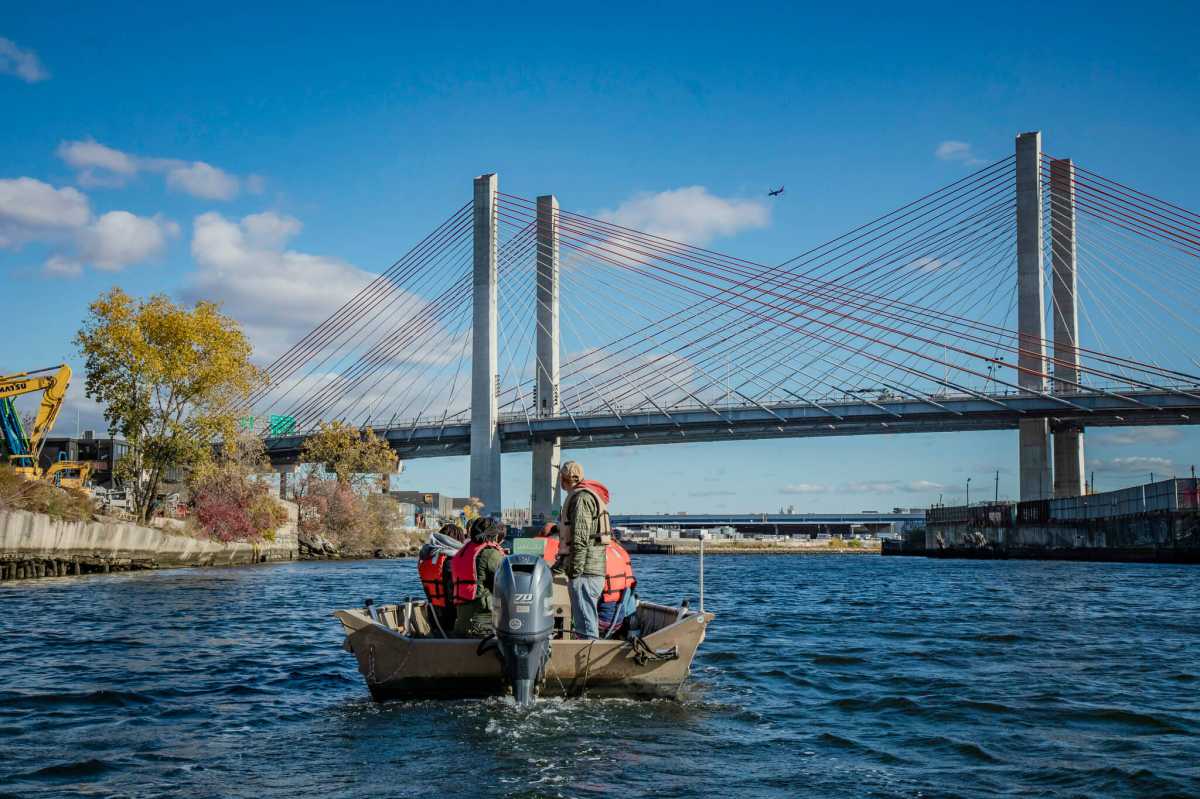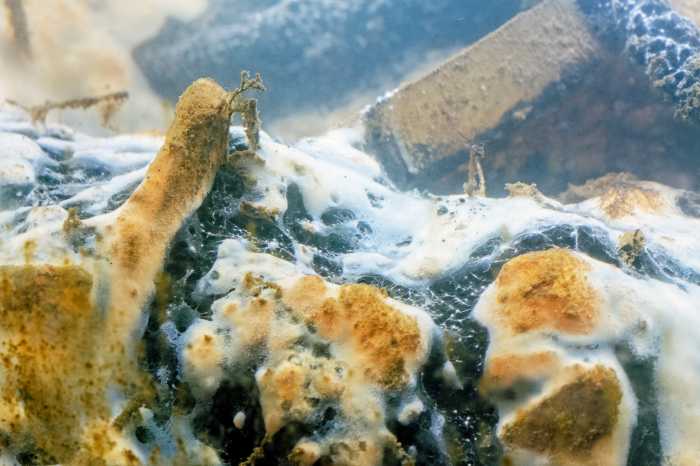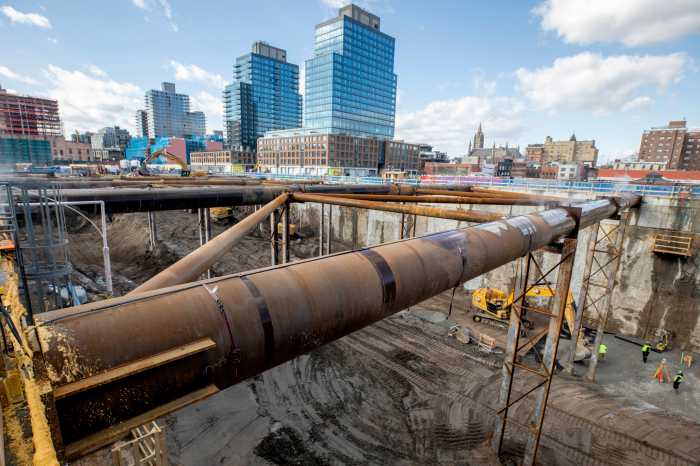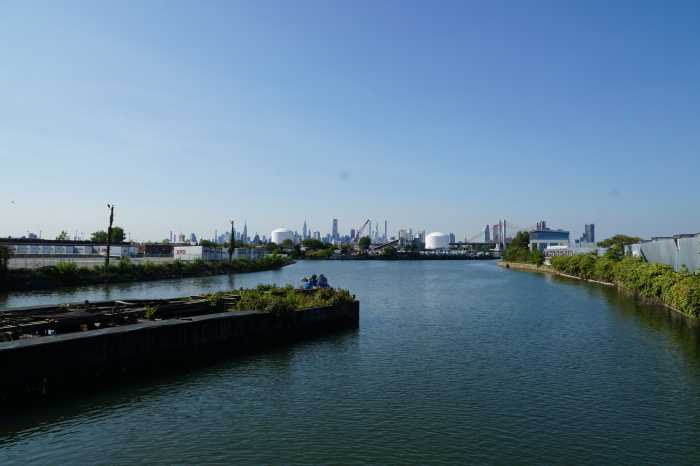Newtown Creek is known among local residents and environmentalists as being one of the most polluted ecological sites in the continental U.S. The creek, runs for roughly 3.5 miles between Greenpoint and Long Island City, Queens, is one of the heaviest-used commercial bodies of water in the country. Industrial refineries line the bank of the creek and are responsible for managing recycled waste, sewage and — in the case of the 110 acre National Grid facility — volatile liquefied natural gas.
It seems that since the dawn of industrialization in the region, the creek has been subject to intense and repeated contamination. One of the oldest refineries in the area, the Peter van Iderstine Plant, which began operations in 1855, was particularly infamous as it processed animal scraps (and once an eight-ton elephant) into feed, fertilizer and glue and gave the area a distinct aroma. It was eventually shuttered in 1977.
However, perhaps the most famous contamination incident remains the 1978 Greenpoint Oil Spill, which saw between 17 and 30 million gallons of oil and petroleum products leech into the water and soil in. The spill was approximately three times the size of the Exxon-Valdez oil spill.
‘Our communities are still recovering’
On Tuesday, New York City Public Advocate Jumaane Williams participated in a boat tour of Newtown Creek with members of advocacy group Newtown Creek Alliance to learn more about the historic waterway and how it is faring after the spill.
“45 years ago, one of the largest oil spills in U.S. history devastated Newtown Creek” said Williams. “Our communities are still recovering.”
The spill was noticed by chance in 1978 when a U.S. Coast Guard helicopter spotted a plume of oil flowing into the creek. A 2007 U.S. Environmental Protection Agency study of the spill area concluded that at least 50 acres of soil had been contaminated.

“They’ve been cleaning it since the 80s,” said Willis Elkins, director of the Newtown Creek Alliance, as he guided a small boat through the creek. “Around the same time that our organization was formed, Riverkeeper came down and they did a patrol and they worked with a council member who represented the 33rd district at the time, and a lot of residents said ‘Oh man, this is really really bad.’”
On the day of Williams’ tour, the creek appeared relatively clear — however, depending on the weather, one can usually detect a sheen of oil atop the surface of the water. One expert on the tour remarked that the chilly November weather may have improved the experience for visitors, as on warmer days the oil vapors rise from the waters and smell rather potent.
Once the breadth of the contamination was established, residents joined Riverkeeper — and eventually the state of New York — to take ExxonMobile, one of the key players involved in the spill, to court.
In 2010, the group won a $19.5 million settlement which was allocated to fund several local organizations — including the NCA — in order to raise awareness about the contamination and begin some partial cleanup.
Newtown Creek was designated as a Superfund site in 2010 and has named several “potentially responsible parties,” who will eventually be responsible for funding the federal scrub, however, the EPA has delayed the planned cleanup until 2032. Funding from the settlement has unfortunately dried up, leading organizations like the NCA to search for additional money to address the accumulation of pollution and toxins at the bottom of the creek, among other cleanup concerns.
“The Superfund designation is really about what we’re not seeing, what’s at the bottom of the creek,” Elkins said. “So all that industrial contamination settled down into the muck, a lot of people call it ‘black mayonnaise’ because it looks like mayonnaise, it’s like jet black. If you go scuba diving down, the water here is probably 15 feet deep and then you hit the top of the sediment, 10 to 15 feet of this highly-toxic material that’s basically accumulated everything that’s been dumped here in the past 170 years. And these are carcinogenic chemicals that are hazardous to the wildlife here and hazardous for us.”
The toxic chemicals aren’t just contained to the bottom of the creek, but are still present in the soil beneath homes and other buildings in Greenpoint and Long Island City. Vapors containing traces of the carcinogens have been found to seep up into homes and commercial buildings.
Cleaning up and connecting the community with the Newtown Creek
The NCA, along with other local partners, has also used the funding to introduce green infrastructure to the area, not only to begin the steps to improve the community, but also to establish a more positive relationship between locals and the creek.
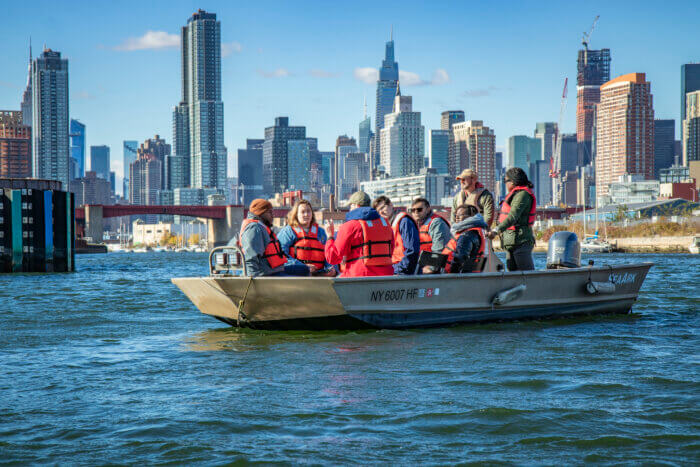
“One of the issues with the creek is … there’s not a lot of access,” said Elkins. “So people that are living nearby or even working right here, they don’t know about the waterway and therefore they’re not thinking about it. They don’t have a chance to form a relationship with this environment, and so that’s helped perpetuate a lot of the state of neglect and abuse where [the creek] has just been a dumping ground for so long and we think it’s really important to incorporate so that people can sort of regain access.”
One initiative the NCA has taken is implementing a 24,000 square foot green roof atop the Kingsland Community Engagement Center in Greenpoint. The roof features native wildflowers and grasses help to soak up rainwater and provide a habitat for local birds and pollinators.
In addition to the green roof, the NCA manages 15 rain gardens within the area surrounding the creek in Brooklyn and Queens. The rain gardens catch storm water runoff and overflow, preventing it from flooding streets or the creek, and use it to help the plants within the gardens flourish.
The NCA and other local partners hope that with future funding they can continue their missions to not only restore the creek by mitigating the current pollution risks in the area, but also reveal the ecological beauty of the area through continued green infrastructure initiatives and revitalize the communities by creating programs that not only improve the general environment but also continue to bolster industrial businesses.
“Fighting for stuff like green infrastructure, to me, is a citywide issue and it’s not just about reducing sewage overflow and all that stuff,” Elkins said. “It’s about all these other things; improving air quality, reducing extreme heat, preventing flooding — these major, major issues … There’s so much opportunity.”


